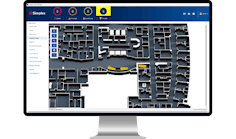Supervise, Supervision, Supervising and Supervised
Q: When do supervised devices cause a trouble signal and when do they cause a supervisory signal? If it is a supervisory signal, then why is it sometimes referred to as a supervisory alarm?
A: As previously discussed, there is much confusion associated with the code’s various uses of the terms supervise, supervision, supervising and supervised throughout NFPA 72 and some building codes. Sometimes it is even used differently by the various chapters of NFPA 72.
Equipment is supervised. Except for suppression systems, when 72 uses the term supervised it usually doesn’t result in a supervisory signal being produced. For example, NFPA 72 requires EOL relays and resisters to be supervised.
Sometimes features of a fire alarm control unit, device, or appliance are required to be supervised internally by the equipment itself. For instance, in 4.4.1.8.6 Charger Supervision, NFPA 72 states: “Supervision means appropriate for the batteries and charger employed shall be provided to detect a failure of battery charging and initiate a trouble signal....” In 11.6.4: “The secondary power source shall be supervised and shall cause a distinctive audible or visible trouble signal upon detecting a failure of battery charging, removal or disconnection of a battery, or a low-battery condition.” However, NFPA 72 flip-flops when requiring that some equipment features be “monitored for integrity.”
Under 4.4.7.2 and 4.4.7.3, it states: “Failure of any audio amplifier shall result in an audible trouble signal” and “Failure of any tone-generating equipment shall result in an audible trouble signal.” Clearly this is supervision of equipment, not monitoring of interconnection of conductors.
Yet another Flip-Flop
Q: Okay, now does wiring have to be supervised?
A: According to NFPA 72, wiring is now said to be “monitored for integrity.” However, it is still technically accurate to say wiring, conductors and their interconnection must be supervised (overseen). 4.4.7.1 Monitoring Integrity clearly refers only to the interconnection of circuits and conductors. But in the very next rule, there is another flip-flop.
4.4.7.2 Monitoring Integrity of Emergency Voice/Alarm Communications Systems and 4.4.7.3 Monitoring Integrity of Power Supplies speak to features and functions of equipment and not the monitoring of circuits. Instead of using a correct form of supervise, the rule completely spoils the “monitored for integrity” term which NFPA 72 so carefully spelled out.
You have to infer the meaning of supervised et al, by how it is used in a sentence. For example, in the following rule, you have to mentally substitute the term monitored for the word supervised: “An audible trouble signal shall be permitted to be common to several supervised circuits.”
In another section of 72, Chapter 6, two concepts blur the meaning by adding “supervised” in parentheses: “Each releasing device e.g., solenoid, relay shall be monitored for integrity (supervised) in accordance with applicable NFPA standards.” A releasing device cannot, itself, be “supervised” nor can it be “monitored for integrity.”
6.8.5.6.2 reads: “The integrity of each fire suppression system actuating device and its circuit shall be supervised in accordance with 4.4.7.1…” The punch line here is that 4.4.7.1 is the “monitoring for integrity” rule.
Greg Kessinger, SET, CFPS, president of an alarm installing company since 1981, teaches NICET training classes to fire alarm system designers and installers and continuing education seminars for Ohio’s fire alarm inspectors. You can reach him at 888-910-2272; e-mail: [email protected]; or visit his website at www.FireAlarm.org.

